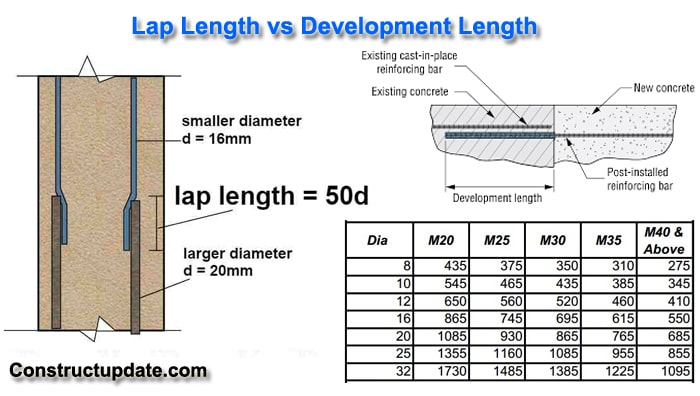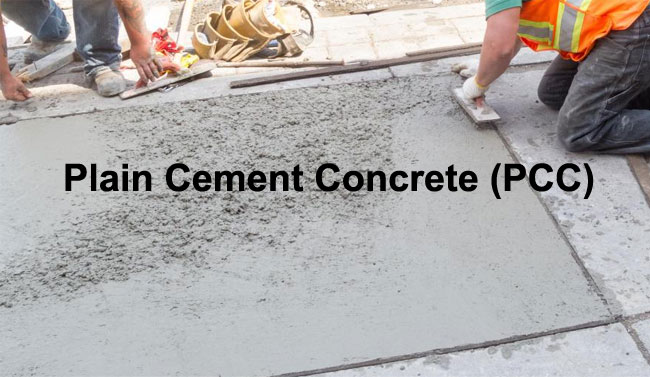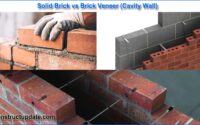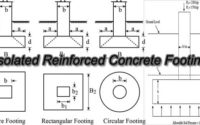Lap Length vs Development Length | Lap Length for Concrete
What is Lap Length?
When bars are positioned short of their needed length (due to a lack of longer bars) and need to be extended, Lap Length is required.
When the diameter of the bar must be adjusted along the length of the bar, lap length is also necessary (as is sometimes done in columns).
The goal of ‘Lap’ is to successfully transfer axial force from the terminating bar to the connecting bar in the junction using the same line of action.
This invariably causes stress concentrations in the concrete around it. The following actions should be taken to reduce these effects:
- Using the right splicing methods.
- Keeping these lapping places away from flexural/shear-stressed portions. and
- Staggering the splicing places at a group’s individual bars (as typically in a column).
When splicing is unavoidable in such circumstances, specific safeguards must be taken, such as:
- The length of the lap is being lengthened (In lap splices and lap welding)
- Around the length of the stirrups, use spirals or tightly spaced stirrups.

Lap length in tension:
The lap length must include the anchorage value of hooks.
- For flexural tension, the larger of Ld or 30d is taken into account.
- For direct stress, the larger of 2Ld or 30d is taken into account.
Lap Length in Compression:
The lap length must be at least 24d but not less than the development length estimated in compression.
Lap Splices:
Bars with a diameter greater than 36 mm should not be spliced with lap splices. Welding should be considered in certain situations. However, if welding is not possible in particular circumstances, lapping for bars bigger than 36 mm diameter may be permitted. However, additional 6 mm spirals should be given around the lapped bars in addition to lapping.
Lap length for M20 concrete:
- Columns – 45d
- Beams – 60d
- Slabs – 60d
What is Development Length?
To transfer the weight from steel to concrete, a Development Length is given. Anchorage length is another name for development length.
The predicted tension or compression in any bar at any section shall be developed on each side of the section by providing suitable development length or by an end anchoring, according to IS 456:2000. So that the member is not snatched from the support system.
A continuous beam, cantilever slabs, and other essential joints will all have this length (beam-column). It will be given in the form of a bend with a thin restraining member, similar to an end beam.
5 Differences Between Lap Length and Development Length
Lap Length:
- The length of reinforcing bar needed to transfer all of the weight or stress from one bar to the next.
- Its tininess is the structure’s consistency.
- When the length of the bars reaches the end, it is provided.
- It transmits stees from one bar to another and is transferred to continuity.
- There is a connection between reinforcement and reinforcement in this case.
Development Length:
- The length of reinforcement bar that must be used to transfer the load or stress created in the reinforcement bar to the concrete.
- Ld is the abbreviation for it.
- At the end of a beam, column, or slab, it is always provided.
- It’s also good for giving grip and support, as well as preventing slippage.
- Concrete and reinforcement are intertwined in this.




